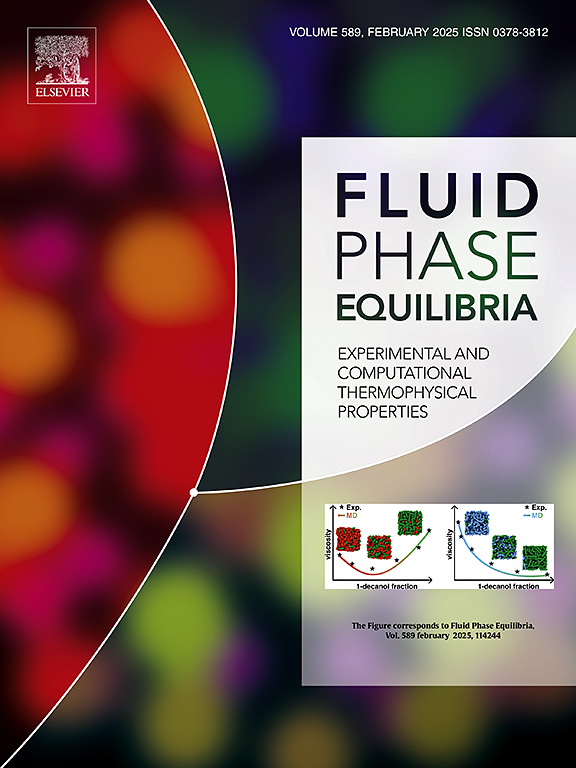Freezing transitions in colloidal nanoparticles: Interplay of dispersive and electrostatic interactions in confined two-dimensional systems
IF 2.7
3区 工程技术
Q3 CHEMISTRY, PHYSICAL
引用次数: 0
Abstract
We have used the classical density functional theory (DFT) of freezing to study the phase behavior of a two-dimensional system of colloidal nanoparticles interacting via a combination of hard-core electrostatic and Van der Walls forces. Pair-correlation functions, used as the lowest-order structural input in DFT, were calculated using Percus–Yevick integral equation theory. By tuning the relative strength of dispersion and electrostatic interactions through a mixing parameter, we systematically investigate the effects on the liquid–solid phase diagram. The results emphasize the importance of long-range dispersive forces that, in combination with electrostatic interactions, enable the formation of stable triangular solid phases.
胶体纳米颗粒中的冻结转变:在受限的二维系统中色散和静电相互作用的相互作用
我们利用经典的密度泛函冻结理论(DFT)研究了二维胶体纳米颗粒系统通过硬核静电和范德沃尔力的组合相互作用的相行为。利用percusyevick积分方程理论计算了作为DFT最低阶结构输入的对相关函数。通过混合参数调节色散和静电相互作用的相对强度,我们系统地研究了对液固相图的影响。结果强调了远程色散力的重要性,它与静电相互作用相结合,能够形成稳定的三角形固相。
本文章由计算机程序翻译,如有差异,请以英文原文为准。
求助全文
约1分钟内获得全文
求助全文
来源期刊

Fluid Phase Equilibria
工程技术-工程:化工
CiteScore
5.30
自引率
15.40%
发文量
223
审稿时长
53 days
期刊介绍:
Fluid Phase Equilibria publishes high-quality papers dealing with experimental, theoretical, and applied research related to equilibrium and transport properties of fluids, solids, and interfaces. Subjects of interest include physical/phase and chemical equilibria; equilibrium and nonequilibrium thermophysical properties; fundamental thermodynamic relations; and stability. The systems central to the journal include pure substances and mixtures of organic and inorganic materials, including polymers, biochemicals, and surfactants with sufficient characterization of composition and purity for the results to be reproduced. Alloys are of interest only when thermodynamic studies are included, purely material studies will not be considered. In all cases, authors are expected to provide physical or chemical interpretations of the results.
Experimental research can include measurements under all conditions of temperature, pressure, and composition, including critical and supercritical. Measurements are to be associated with systems and conditions of fundamental or applied interest, and may not be only a collection of routine data, such as physical property or solubility measurements at limited pressures and temperatures close to ambient, or surfactant studies focussed strictly on micellisation or micelle structure. Papers reporting common data must be accompanied by new physical insights and/or contemporary or new theory or techniques.
 求助内容:
求助内容: 应助结果提醒方式:
应助结果提醒方式:


